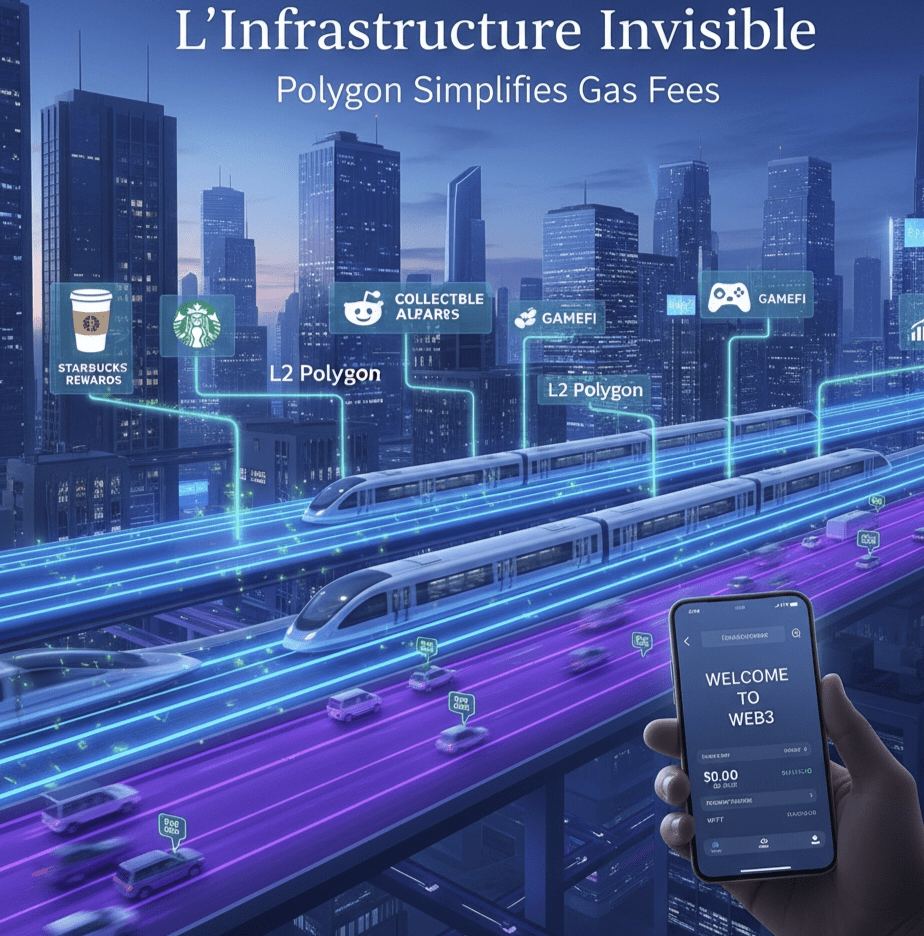How L2 Solutions (like Polygon) Transform the Gas Dilemma into Simplicity
@Polygon #Polygon $POL 
The digital future has always been built on what we take for granted. Who thinks about the power plant when turning on a light? No one. Yet, in the era of blockchain, every interaction is hindered by an obsessive technical question: How much will it cost in gas fees?
Web3 cannot become the internet of tomorrow if the user must constantly worry about the cost and slowness of the fundamental layer. This is where the genius of silent innovation lies: Layer 2 (L2) solutions, led by Polygon, are making blockchain invisible to the millions of users who are already using it without knowing.
I. The Challenge of 'Gas': Why Ethereum Cannot Do It Alone
To understand the role of scaling solutions, one must first understand the scalability problem. Ethereum, the benchmark blockchain for smart contracts, is the most secure digital highway in the world, but it is also a narrow pipe.
Gas fees are not a tax, but a defense and compensation mechanism. They:
Secure the network by making spam attacks too costly.
Compensate validators for their work securing the network.
The problem arises during high demand: the highway is congested. Gas prices skyrocket, making any transaction under a few hundred dollars (like buying a small NFT, playing, or swiping) economically unfeasible. Web3 then becomes a luxury reserved for a few.
The observation: The security of an L1 (Layer 1) like Ethereum is non-negotiable, but its processing capacity is insufficient for global adoption.
II. The Solution: Move the Action (Layer 2)
Layer 2 (L2) solutions, like Polygon, have resolved this dilemma by creating parallel paths that do not compromise Ethereum's security.
Imagine Ethereum as the vault of a bank: ultra-secure, but slow. Polygon, on the other hand, is the local branch or the high-speed train:
Off-Chain Processing: Daily transactions (exchanges, swaps, movements in a game) are processed quickly and at low cost on the Polygon network.
Inherited Security: Periodically, Polygon bundles thousands of transactions into a single compact proof that it 'validates' on Ethereum. In this way, Polygon borrows the security and decentralization of L1 without suffering from congestion.
It is this ability to 'bundle' thousands of actions into one that makes individual gas fees almost negligible.
III. The Art of the Invisible: Micro-Fees = Massive Adoption
The impact of this architecture is visible in massive and silent adoption.
True adoption of Web3 does not happen when everyone talks about blockchain, but when they use it without even noticing. When gas fees are measured in micro-cents, the technology fades in favor of utility.
Starbucks: Millions of members interact with their loyalty program, which uses Polygon, without ever having owned a $MATIC token or hearing about gas.
Reddit: Millions of users claimed Collectible Avatars (NFTs), managed on Polygon, without having to pay the usual $50 of Ethereum for entry fees.
In these cases, the blockchain has disappeared behind the switch. Polygon provides the necessary power — the fluidity of micro-fees and speed — for these giants to build experiences for millions of people. The entry cost for the user is reduced to zero, opening the door to the economy of tomorrow.
Conclusion: The Future is in Simplicity
The Polygon Era is the era where blockchain technology withdraws from the conversation to serve the user.
Web3 is no longer a technical dilemma between security and speed, but a simple and intuitive infrastructure that allows:
Fluid GameFi (Play-to-Own).
Global loyalty systems.
Decentralized Finance accessible to the greatest number.
final:
Open your Wallet on Polygon. Explore a decentralized gaming or finance application. The cost and speed you expected are now the norm. The power is in your hands. Literally.
Disclaimer: Includes third-party opinions. No financial advice. May include sponsored content. See T&Cs. 